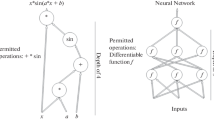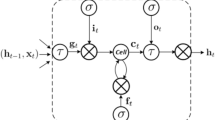Abstract—
A method for detecting anomalies in the work of cyberphysical systems by analyzing a multidimensional time series is proposed. The method is based on the use of neural network technologies to predict the values of the time series of the system data and to identify deviations between the predicted value and the current data obtained from the sensors and actuators. The results of experimental studies are presented, which testify to the effectiveness of the proposed solution.






Similar content being viewed by others
REFERENCES
Vasil’ev, Y.S., Zegzhda, P.D., and Zegzhda, D.P., Ensuring the safety of automated process control systems in hydropower facilities, Izv. Ross. Akad. Nauk, Ser. Energ., 2016, no. 3.
Lavrova, D.S., An approach to developing the SIEM system for the Internet of Things, Autom. Control Comp. Sci., 2016, vol. 50, p. 673. https://doi.org/10.3103/S0146411616080125
Tulone, D. and Madden, S., PAQ: Time series forecasting for approximate query answering in sensor networks, in European Workshop on Wireless Sensor Networks, Berlin, Heidelberg: Springer, 2006, pp. 21–37.
Wei, L., et al., Assumption-free anomaly detection in time series, SSDBM, 2005, vol. 5, pp. 237–242.
Pincombe, B., Anomaly detection in time series of graphs using arma processes, Asor Bull., 2005, vol. 24, no. 4, p. 2.
Hundman, K., et al., Detecting spacecraft anomalies using LSTMs and nonparametric dynamic thresholding, arXiv preprint arXiv:1802.04431, 2018.
Filonov, P., Lavrentyev, A., and Vorontsov, A., Multivariate industrial time series with cyber-attack simulation: Fault detection using an lstm-based predictive data model, arXiv preprint arXiv:1612.06676, 2016.
Nanduri, A. and Sherry, L., Anomaly detection in aircraft data using Recurrent Neural Networks (RNN), Integrated Communications Navigation and Surveillance (ICNS), 2016, pp. 5C2-1–5C2-8.
Yi, S., et al., Grouped convolutional neural networks for multivariate time series, arXiv preprint arXiv:1703.09938, 2017.
Supercomputer Center Polytechnic. https://www.scc.spbstu.ru.
ACKNOWLEGMENTS
The project results are achieved using the resources of supercomputer center of Peter the Great St. Petersburg Polytechnic University—SCC “Polytechnichesky” (www.spbstu.ru).
The project is financially supported by Ministry of Science and Higher Education of the Russian Federation, Federal Program “Researching and Development in Priority Directions of Scientific and Technological Sphere in Russia within 2014–2020” (Contract no. 14.575.21.0131, September 26, 2017, unique identifier RFMEFI57517X0131).
Author information
Authors and Affiliations
Corresponding authors
Additional information
Translated by S. Avodkova
About this article
Cite this article
Kalinin, M.O., Lavrova, D.S. & Yarmak, A.V. Detection of Threats in Cyberphysical Systems Based on Deep Learning Methods Using Multidimensional Time Series. Aut. Control Comp. Sci. 52, 912–917 (2018). https://doi.org/10.3103/S0146411618080151
Received:
Published:
Issue Date:
DOI: https://doi.org/10.3103/S0146411618080151




